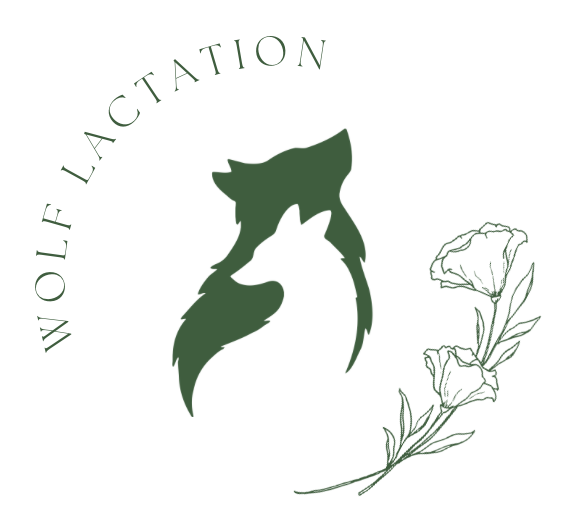Introducing Your Breastfeeding Baby to Bottle Feeding
Most breastfeeding babies also feed milk in a bottle at least occasionally during their first 6-12 months. Whether it is because mom is unavailable for feedings, or they need supplemental feeding, or because the other parent or another loved one wants to have the joy of feeding your baby, bottle feeding is a skill that is helpful to know.
Two key elements to bottle feeding are when and how to introduce the bottle to your baby, and how to protect your milk supply. You can introduce a bottle at any time but an ideal time is between 4-6 weeks old. This gives you time to make sure your milk supply is well established and that your baby is latching and feeding well at the breast. If you introduce the bottle too early, some babies have difficulty maintaining effective breastfeeding, but offering that first bottle too late can create a bottle refusal. Usually with a little time and patience, babies learn to bottle feed well while successfully continuing to breastfeed.
Protecting your milk supply is critical to continued breastfeeding success when incorporating bottle feeding. Anytime you skip a feeding at the breast, make sure you do a pump session to both collect the milk that your baby would have eaten for that feeding and to drain the breasts so that your body can keep making milk at the level that your baby needs. If your baby is mostly, or exclusively bottle feeding, then you will need to pump your breasts every 2-3 hours to maintain your milk supply. Your pump sessions should be 15-20 minutes long. Make sure that you know how to use your pump effectively and that you are using the correct flange size. See my other post about how to determine your best flange fit.
How do I choose a bottle/teat?
Most bottle/nipple products sold are advertised as "more like the breast" but that is not always an indicator that it is a good choice for your baby. When choosing a bottle, you can use plastic that is BPA free and intended for use with human milk, or there are other options such as silicone, stainless steel, or glass. The nipple for the bottle should be food grade silicone and should be round in shape with a gentle, triangular shaped slope to help baby latch widely on to the nipple at a depth that is comfortable for them. A slow flow nipple is important to start with. Not all baby's need to change the speed of the flow of the bottle nipple. Use a slow flow to start and only change the flow if your baby is having difficulty with eating the bottle at the right speed. Bottle feeding should be slow—like breastfeeding, taking about 15-20 minutes per feeding.
How much do I put in the bottle?
When first beginning bottle feeding, start small. Most babies eat 2-3 ounces in the first month and then increase to 3-5 ounces for the next 5 months of life. It's always better to offer smaller amounts at first until you know how much your baby needs. This helps prevent overfeeding which can cause upset tummies and too much gas. It also prevents wasting your precious milk that you worked so hard to pump and save.
How do I feed by baby a bottle?
It is important for all babies to eat a bottle (no matter what type of milk is in it) with a paced bottle feeding technique. This is an easy, healthy pace to make sure your baby is eating well at their own natural pace. Babies do this automatically at the breast and you can help your baby do the same with a bottle. Through paced bottle feeding, you are making it easy for your baby to switch back and forth between the breast and bottle.
Hold your baby more upright, at a 45-90 degree angle. Babies should never eat laying on their backs. Touch or tickle your baby's upper lip with the bottle nipple and wait for them to open wide. Allow your baby to latch deeply to the bottle, with their lips wide around the base of the nipple. Let your baby suck a few times on the bottle nipple with no milk in the nipple. This is similar to the first few sucks at the breast. Then tip the bottle so that you are holding it horizontal—parallel to the floor. Your baby should only get milk when they are actively sucking on the nipple. If your baby starts to gulp or guzzle too quickly, tilt the bottle down so the milk flows back into the bottle and let them suck a few times on the empty nipple. They will slow down and catch their breath. You will know that your baby is ready for more when they increase their sucking speed again. Then you can return the bottle to the horizontal position for more feeding. Make sure you stop and remove the bottle halfway through to offer your baby a chance to burp. Then you can continue feeding until they are satisfied and content or finished with the bottle. Burp your baby again after finishing the feeding. Remember: Eating is a social event for humans. Make sure you are paying attention to your baby and interacting with them during their feeding with a bottle. Strive to put away all screens and distractions and take advantage of this time to learn and know your baby's cues and wonderful personality.
Wolf Lactation, LLC, founded by Jennifer Wolf, DNP, MSN, RN, IBCLC, CBE, offers compassionate, evidence-based support for families throughout their feeding journey. Jennifer provides prenatal education and breastfeeding consultations, both virtually and through home visits, with services that include guidance on bottle feeding and pumping. Her care is personalized, approachable, and grounded in clinical expertise. With a warm, supportive approach, Jennifer helps families feel confident and informed as they navigate the early stages of parenthood.



